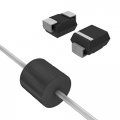To be more precise, usually it´s the best to eliminate interference (EMI) already at a source of interference itself. But because there are a lot of disturbance sources in a common 230V mains, the only reliable possibility how to protect our device is to equip it with a suitable filter. Another positive thing is also a prevention of possible transfer of noise from our device into a public network (mains).
Reasons why to use a filter or other EMI suppressing components are well known. In general here belongs a protection of circuits from unwanted influence (digital and analogue circuits), as well as protection from damage to a device in an urgent case. EMI is in general a “silent killer”, as it appears with a various intensity and often absolutely irregularly.
Those ones, who´ve already experienced searching for a fault, why a given device works irregularly, can say realistically about problems, which EMI is able to cause. It´s treacherous to think, that there´s no interference in a given place, because even if we´ve really measured only a small interference, it can appear anytime without warning.
Interference in mains can be described in four categories:
● fluctuations (voltage) in an industrial network
● harmonic interference in a range of 100Hz to 2 kHz
● transient interference in a range up to 300 MHz
● sinusoidal high frequency interference up to 1GHz (or even more)
In practice, interference appears mainly in last three categories. Filters are usually constructed from capacitors and inductors, or also some other components like varistors, transils, VHF chokes etc. Wide band filters are often composed of 2-3 stages.
Capacitors connected between L-N are marked as „X“ and capacitors between L-PE and N-PE as „Y“ capacitors. Leakage current of a filter is mainly determined by „Y” capacitors. As medical devices must meet more stringent requirements for a leakage current, in most cases they don´t use „Y“ capacitors (even for the price of somewhat lower EMI suppression).
EMI filters are available in various versions and they use to be the most effective if they are directly on the device input. Swiss company Schurter as a specialist in a given segment offers a wide range of filters combined with an AC inlet socket or also with a switch and fuses. An advantage is that by using such a module, you´ll manage four components by one component and also their mechanical assembly to a panel. In our stable stock offer can be found several filters. Many details about a construction of Schurter filters will provide you the following document.
In case of interest even in a non-stock type, please contact us at info@soselectronic.com.
- efficient protection from interference and consequent faults in devices
- many types are available exactly by the application demands
- filter+switch+fuse+socket = 4in1
Do you like our articles? Do not miss any of them! You do not have to worry about anything, we will arrange delivery to you.
Competition with the following question has been published here:
What size of fuses is suitable for a filter Schurter series FKH?



























